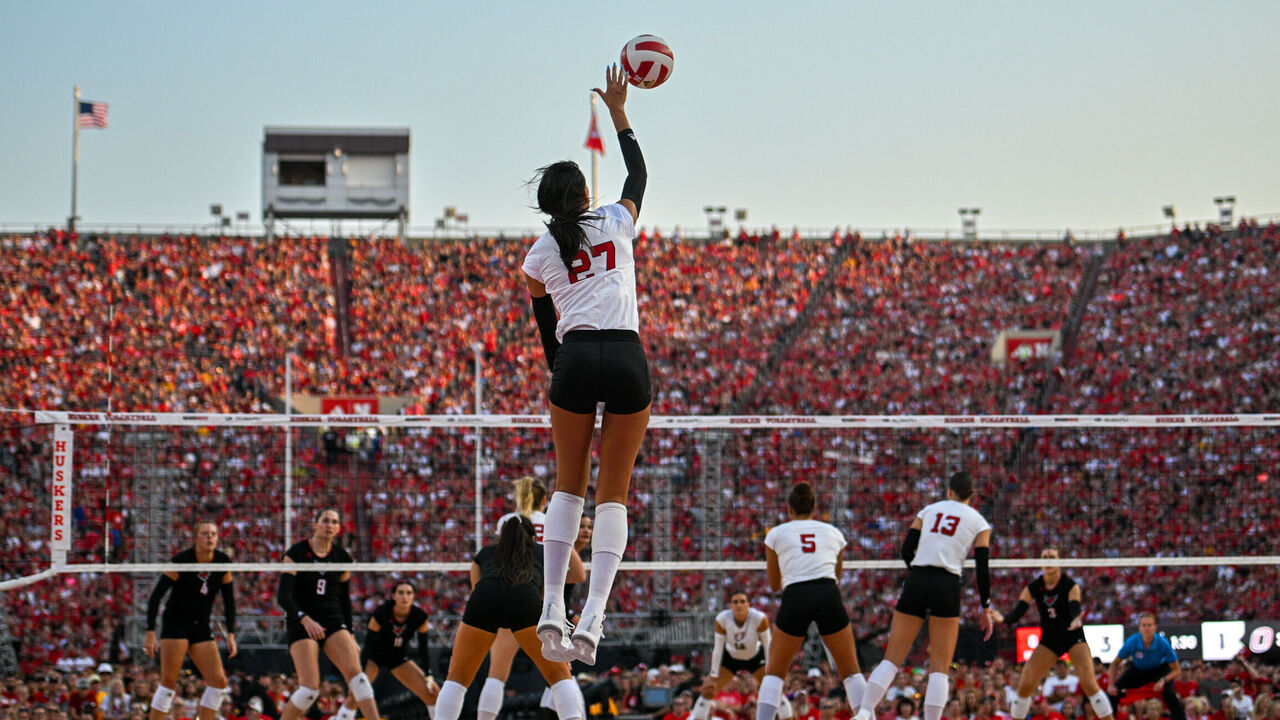Women's volleyball prepares to meet its moment as its popularity grows
Quick, what's the No. 1 women's sport North American audiences love to watch? You probably guessed basketball, tennis, or soccer. The answer might surprise you: volleyball.
Volleyball has been steadily gaining popularity in the United States. Nebraska volleyball fans set the world record for the biggest audience at a women's sporting event on Aug. 30, with 92,000 people filling Memorial Stadium in Lincoln. But that wasn't simply a flash in the pan.
Morning Consult data show a majority of U.S. adults rank volleyball as the women's sport they most enjoy watching (basketball came fourth, and women's soccer seventh). Years of grassroots initiatives at the high school and college level have contributed to its rise.
"It has secretly been a big sport for a while, but we seem to be hitting a tipping point," said Cassidy Lichtman, who played on Team USA from 2011-16 and now plays professional volleyball in the Athletes Unlimited league. "Volleyball is not an upcoming sport anymore. It's here."
Participation data back Lichtman's claims. Volleyball is the No. 1 team sport for high school girls to play, and it's just 2,500 athletes away from surpassing track and field as the top overall girls' high school sport, according to data from the National Federation of State High School Associations.
Those young enthusiasts naturally move up to the college level, which is now playing a pivotal role in elevating the sport's profile. NCAA women's volleyball tournaments have become must-watch events, with the 2021 final drawing a TV audience of 1.2 million people on ESPN.

A strong international team also helps - the U.S. indoor volleyball squad took home gold at the Tokyo Games.
"The Olympics is always a big moment for volleyball … it's a hugely important sport to watch in the Olympics," Lichtman said.
Whereas before the sport would see interest wane following an Olympic year, that too has started to change.
"We're now starting to see fans transition over after the Olympics," she says.
But despite positivity, the sport still has to overcome major headwinds to continue its ascent. First, while there's a strong market for professional volleyball internationally, options in North America are harder to come by. Until Athletes Unlimited launched in 2020, there was no professional women's volleyball in the United States.
"In order to have some sort of credibility or visibility as a mainstream sport, you have to have the pro side," Lichtman said. "Even though we have these massive numbers at the U.S. collegiate level, we didn't have any pro volleyball in the U.S. for decades … even though people have played volleyball for a long time here, the fandom hasn't developed in the same way. We're really having to teach people how to become volleyball fans."

Athletes Unlimited, which kicks off its third season Friday in Mesa, Arizona, is a forerunner in that department. By 2024, there could be three more pro leagues: League One Volleyball, Pro Volleyball Federation, and Volleyball League of America. League One announced last week it had recently raised $35 million in funding from institutional sources, as well as athlete-investors such as Kevin Durant, Jayson Tatum, Candace Parker, and Lindsey Vonn.
Beyond launch, though, where will the money come from to sustain these pro leagues? With fan bases still in their infancy, they'll need to lean on sponsorship opportunities to pave the way.
"The brands who have sponsored volleyball so far, most of them are endemic to the sport," said Pat Heffernan, senior vice president of sponsorship and strategic planning at Jack Morton, a global experiential marketing agency. "There's not really a robust pro league, but the feeling is you're going to see a couple spots of momentum. Then we'll see where this goes."
Heffernan's sense is that while bigger brands like Nike and Adidas haven't engaged in meaningful volleyball sponsorships just yet, their participation is not long off.
"There is an eye toward planning because (volleyball) feels like it's going to have its moment within the next year or so," he said.
Part of the hesitancy could be mired in old ways of thinking.
"I do think there's a bias toward men's sports, and because this is a female-driven sport, we haven't seen it get a lot of attention yet," Heffernan said. "The awakening to women's sports that has just started really in the last couple of years I think is what will unlock the next step for volleyball."
Lichtman believes that extra support will be more than sufficient to help the sport break through.
"Look at what we've done with very little visibility," she said. "Now, if you give us a little bit of visibility, some media coverage, we've got plenty of space to keep exploding."
Jolene Latimer is a video producer and feature writer at theScore.
HEADLINES
- Golden Knights in awe of Smith's winner: 'One of the craziest things I've ever seen'
- Ant goes off for 36 to lift T-Wolves past Warriors in Game 3
- Padres make history with 21-0 shutout of Rockies
- Astros' McCullers, family got death threats after tough start
- Brind'Amour credits Andersen in Canes' win: 'He kept us in the game'